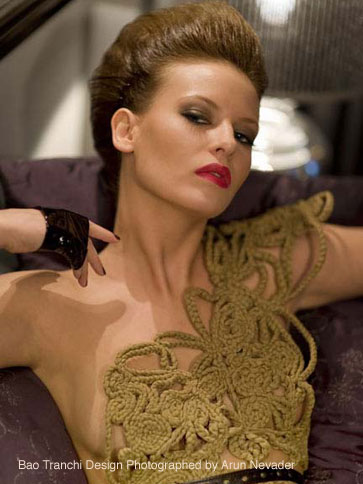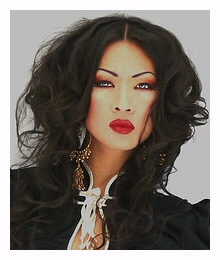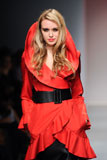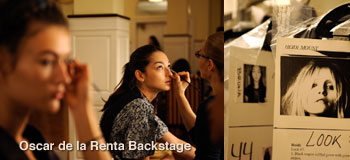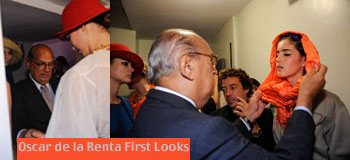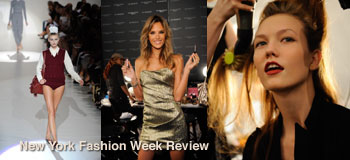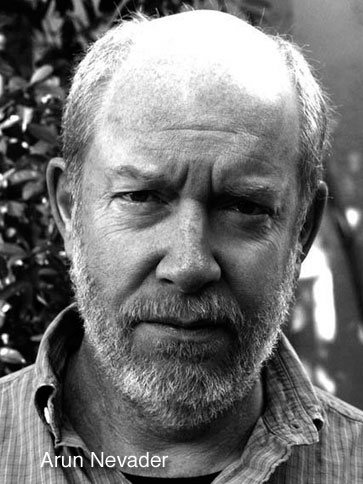 Winter 2009, Anne V. from the Victoria’s Secret Runway Show graced our cover. Beautiful images from Los Angeles, New York, San Francisco, and Miami Fashion Weeks entertained our readers and brought the best fashion around to Agenda Magazine, not to mention the exclusive behind the scenes and celebrity coverage. Photographer Arun Nevader was partially responsible for creating the high standard that is Agenda. I remember when I first met Arun at New York Fashion Week. Agenda was still very new, and I was paying my dues videotaping runway shows on the riser. He came to my rescue as I was fighting for my right to be there along with the veterans. I knew he was special back then, but having his contributions these past few years has truly been a blessing.
Winter 2009, Anne V. from the Victoria’s Secret Runway Show graced our cover. Beautiful images from Los Angeles, New York, San Francisco, and Miami Fashion Weeks entertained our readers and brought the best fashion around to Agenda Magazine, not to mention the exclusive behind the scenes and celebrity coverage. Photographer Arun Nevader was partially responsible for creating the high standard that is Agenda. I remember when I first met Arun at New York Fashion Week. Agenda was still very new, and I was paying my dues videotaping runway shows on the riser. He came to my rescue as I was fighting for my right to be there along with the veterans. I knew he was special back then, but having his contributions these past few years has truly been a blessing.
When did you become a photographer, and what was the motivating factor?
Well, I started as a photographer in Central America in the early 80s, working extensively in Guatemala and El Salvador during their insurgency conflicts, though El Salvador was more a civil war than an insurgency campaign. It was there that I learned how to photograph people in the midst of events, often tragic and horrifying. I left photography in the mid 80s and didn’t return to it until my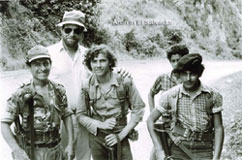 son, his partners, and a core of talented entertainment photographers founded WireImage in 2001. I became one of the early WireImage photographers working under the guidance of the founding photographers. Those were exciting times for this business.
son, his partners, and a core of talented entertainment photographers founded WireImage in 2001. I became one of the early WireImage photographers working under the guidance of the founding photographers. Those were exciting times for this business.
I understand you are also a teacher. Tell me a little about that. And how does being a teacher affect your craft?
Yes, I’m a lecturer in the College of Engineering at UC Berkeley. I teach information design for technology development in the Technical Communications Program. I’m not sure what qualified me for the job other than being in the right place at the right time—I’ve considered Berkeley my home since 1967. My graduate work is actually in Early Modern British Studies, and my field of expertise is the influence of French neo-classical painting on the British Gothic literary imagination as it appears in both fiction and the commercial stage in late 18 th century Britain. There is absolutely no relation between these two worlds of cultural literary studies and quantitative information design. But I also have extensive experience in structural engineering as a builder of some fairly large commercial projects. So I guess my language skills, together with a strong knowledge of civil engineering practice was a strong skill set for the position that I accepted in 2000 at UCB. It’s been a dream job for reasons like trying to explain the taste of sweet to someone who has yet to taste it. I teach graduating seniors across several engineering disciplines, which often means that I’m working with some of the brightest minds on the planet. Why is this so gratifying? I’m clearly the class idiot, most GPAs are hovering at the 4.0 range—some higher! And I get to read 50 of the most exciting technology projects under development at Berkeley. These projects change from year to year, so I’m always about 6 to 10 years ahead of the marketplace—things like smart dust (autonomous intelligent particles the size of a period on the page, floating in mid-air, gathering and transmitting information, or synthetic blood, or quantum computing for fail-safe data security, or thin-film solar, some either classified or proprietary—you get the idea. I wake up on a Tuesday or Thursday and say, “Wow, today’s a school day!” My mother always used to tell me that I’d be an engineer one day. Well, Mom (she died in 1964), not quite but close enough, perhaps better!
I don’t see that much in common between my academic life and my life as a photographer. My students, of course, love my photos, as it’s a well-known fact that engineering students at Berkeley have no life beyond their latest problem set. But for me, the worlds are totally separate. Since I know a fair amount about digital imaging technologies, I can often use them to explain relevant issues in the classroom, but that’s about it.
What were some of the highlights of your career? (For example, the most exciting photo-shoot, biggest job, etc.)
Well, starting from the WireImage days, they are almost too many to list. First of all, it’s important to understand that I’m a press photographer who shoots mostly entertainment and fashion. I wouldn’t call myself an artist, but an observer. Sometimes, if rarely, the photo does achieve that extra status as somewhat remarkable, but it’s usually in spite of it all. If I had to choose a couple of moments, it would be shooting for People Magazine for a Michael J. 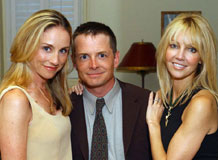 Fox event. Michael, his wife Tracy, and Heather Locklear were there for the event. Michael’s publicist came up to me seconds before getting what I needed and said to me, “Arun, you get three snaps. I better not hear a fourth. Make sure you get it in three.” Well, I got it in three, though that’s often hard to do. My highlights have been in shooting the bigger film festivals such as Sundance and Telluride, not to mention the San Francisco International Film Festival a few years ago. I had Sharon Stone, Phil Bronstein, Warren Beatty, Annette Bening, Sean Penn, Kevin Spacey, and Robin Williams in a hotel room, and I was the only guy in there for most of it. I thought I had died and gone to celebrity heaven. Most recently, I’d say being able to photograph Justin Timberlake and Anna Wintour together posing for me. You’ll never see that combination again. I’ve had too many of those kinds of
Fox event. Michael, his wife Tracy, and Heather Locklear were there for the event. Michael’s publicist came up to me seconds before getting what I needed and said to me, “Arun, you get three snaps. I better not hear a fourth. Make sure you get it in three.” Well, I got it in three, though that’s often hard to do. My highlights have been in shooting the bigger film festivals such as Sundance and Telluride, not to mention the San Francisco International Film Festival a few years ago. I had Sharon Stone, Phil Bronstein, Warren Beatty, Annette Bening, Sean Penn, Kevin Spacey, and Robin Williams in a hotel room, and I was the only guy in there for most of it. I thought I had died and gone to celebrity heaven. Most recently, I’d say being able to photograph Justin Timberlake and Anna Wintour together posing for me. You’ll never see that combination again. I’ve had too many of those kinds of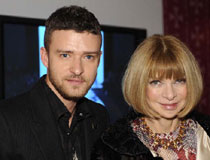 moments to recount here. Overall, I’d say that I’m just now hitting my stride in highlights, and it did not happen until I started shooting backstage fashion for Dan Lecca in New York. Celebrity photography can be exciting, but shooting beauty in its highest register is transcendent and the dream of many photographers.
moments to recount here. Overall, I’d say that I’m just now hitting my stride in highlights, and it did not happen until I started shooting backstage fashion for Dan Lecca in New York. Celebrity photography can be exciting, but shooting beauty in its highest register is transcendent and the dream of many photographers.
You have had the opportunity to shoot with a lot of amazing people. I know that you have shot Victoria’s Secret show a few times now. What was that like?
Yes, well, I’ve shot VS for three years now, and the last two seasons for the designer. When you shoot for the designer, you get the best spot on the floor. 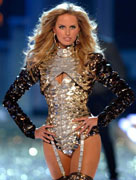 So my spot is always directly to the left of the giant CBS TV camera. The show is lit for TV and staged for TV, so they care far less about the still photographers. But when you’re right next to the TV guy, then all the models are looking right down your lens and you’re always eyeball to eyeball with them. Everyone else is shooting from underneath, which is an entirely different angle and a compromised photo. Many of the models in the VS show are actually New York runway models, most of whom I know from New York Fashion Week. So it’s great to see them in the VS show. They are second billing to the VS angels—the contract models—is always hard to believe, but still true. The VS show is the runway spectacle of the year. It’s probably the only show where the model is in fact the center of attention, not the fashion. Shooting backstage last season, especially in available light was extraordinary. Everybody understands that we’re all here to make it work and the models are terrific to work with, even with six people in their hair.
So my spot is always directly to the left of the giant CBS TV camera. The show is lit for TV and staged for TV, so they care far less about the still photographers. But when you’re right next to the TV guy, then all the models are looking right down your lens and you’re always eyeball to eyeball with them. Everyone else is shooting from underneath, which is an entirely different angle and a compromised photo. Many of the models in the VS show are actually New York runway models, most of whom I know from New York Fashion Week. So it’s great to see them in the VS show. They are second billing to the VS angels—the contract models—is always hard to believe, but still true. The VS show is the runway spectacle of the year. It’s probably the only show where the model is in fact the center of attention, not the fashion. Shooting backstage last season, especially in available light was extraordinary. Everybody understands that we’re all here to make it work and the models are terrific to work with, even with six people in their hair.
Is there anything unique about the way you shoot, like special techniques, lighting style, etc.?
I try to see the image before I shoot it. Since I shoot mainly backstage now, that is even more important. The image usually lasts for a fleeting moment. You either get it or you don’t. There won’t be a second chance in many cases. But I’ve learned that in shooting the top 50 models backstage, it’s just as important to know what else is in the shot besides the beauty. Those other things are often the things that will make the shot. Going for color, balance, depth of field, and the timeless strangeness of rare beauty—those are the things I look for. What’s strange about beauty at that level is that it’s transformative. Oftentimes, an odd, very young, overly thin, wispy girl walks in the backstage door to sit down for makeup and hair. She walks in often with bad hair and bad skin, and in the space of two hours undergoes a metamorphosis into the true beautiful form she can then fully embody. I shouldn’t say that this is only the provenance of female models. Male models are equally overwhelming in their level of beauty and oftentimes even more surprising, though usually less so in the transformation that takes place in hair and makeup. As far as camera technique is concerned, I like to get it as perfect as possible right out of the camera with as little image processing as possible. That’s not always possible because of skin and other factors. Bad skin in models, by the way, has more to do with constantly being in new makeup and having lots of hands on your face—a health concern that is now only beginning to be addressed.
Who are some of your influences, if any?
Helmut Newton, Herb Ritts, and Michael Caulfield, to whom I will always be indebted.
Tell me about what you’re doing now.
Miami Swim Shows will happen in July, New York in September, flying to Iceland for two days in September for their yearly Fashion Week, then Los Angeles Fashion Week, Victoria’s Secret again in November, and a host of individual events scattered throughout.
What was the highest high of your career?
Having a tall dynamite blonde at a high profile party almost run me over as I was 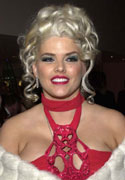 about to take her photo the night of the Oscars in 2002. She was too beautiful and too crazy for words. And I said, “And, Miss, can I get your name please?” “Yes, you can call me Anna Nicole.” It was my first Oscar party, and a quarter-page photo ran in the New York Postthe next day of Anna Nicole Smith with my by-line.
about to take her photo the night of the Oscars in 2002. She was too beautiful and too crazy for words. And I said, “And, Miss, can I get your name please?” “Yes, you can call me Anna Nicole.” It was my first Oscar party, and a quarter-page photo ran in the New York Postthe next day of Anna Nicole Smith with my by-line.
Were there any lows?
Yeah, when I mistakenly reformatted a card that had probably $10,000 worth of celebrity images on it. It was the Playstation 2 party celebrity arrivals event in Los Angeles back in 2002. Too painful to remember. I can’t thank you for reminding me of my stupidity, but I can appreciate the lesson.
What advice would you give to aspiring photographers?
Keep shooting all the time. It’s increasingly difficult to make a career out of it, so know why you’re doing it. Never say no to a job, and always respect your limits, which end at the end of your lens. There’s a lot to say about this world, and hard to get it into a single paragraph. So anyone who wishes to know more can contact me at arun@arunnevader.com
Any last words?
I never knew it until much later in life, but photography is a form much like poetry—that is, a language frozen in its unique time, this time in its frame. Always try to see the frame when you can—the rest will be contained therein. One last word on technique—always push the limits of your lens and never go for the easy shot unless you have to.
Interviewed by Kaylene Peoples
